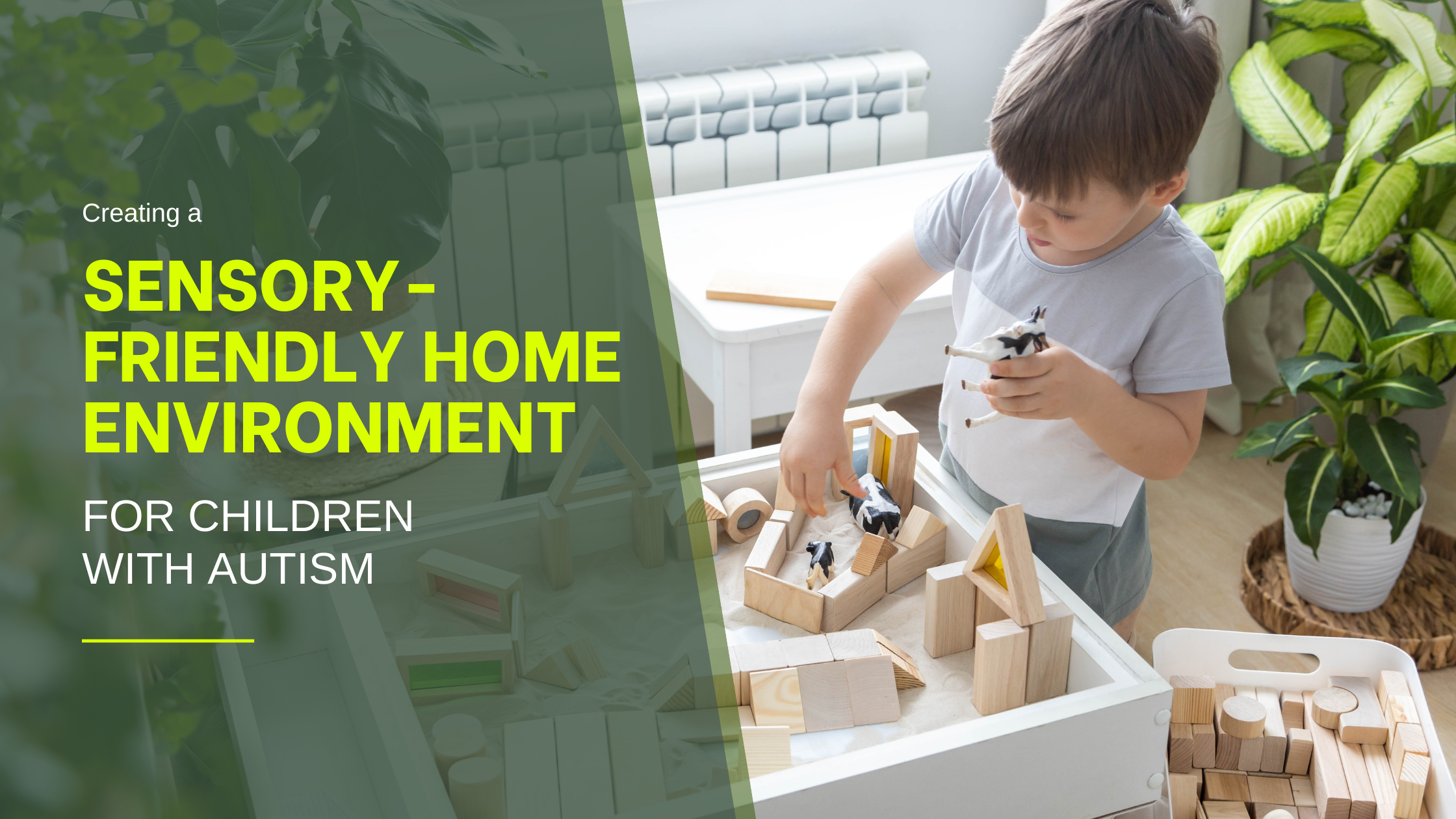Creating a Sensory-Friendly Home Environment for Children with Autism
January 31, 2025

For children with autism, the home should be more than just a place to live—it should be a sanctuary that promotes comfort, relaxation, and learning. A sensory-friendly environment can make a significant difference in helping children with autism feel safe and supported while reducing sensory overload. Here’s a guide to creating a sensory-friendly home that works for your family.
Why Sensory-Friendly Spaces Matter
Children with autism often experience heightened or diminished sensitivity to sensory input. Everyday sounds, textures, lights, or smells can feel overwhelming, making it essential to design spaces that address their unique sensory needs. A sensory-friendly home environment can:
- Reduce stress and anxiety
- Encourage self-regulation
- Improve focus and communication
- Foster independence and confidence
Steps to Create a Sensory-Friendly Home
1. Understand Your Child’s Sensory Profile
Every child is different. Take time to identify your child’s sensory preferences and triggers. Do they seek or avoid certain stimuli, like bright lights, loud noises, or specific textures? Observing their behavior and consulting with therapists can help you design a personalized environment.
2. Designate a Calm Zone
Create a dedicated space where your child can retreat to when they feel overwhelmed. This space should:
- Be quiet and free from distractions.
- Include items that help them self-soothe, such as weighted blankets, fidget toys, or calming music.
- Use soft lighting and neutral colors to create a peaceful atmosphere.
3. Optimize Lighting
Bright or flickering lights can be overstimulating. Instead:
- Use natural light whenever possible.
- Install dimmable lights to adjust brightness levels.
- Choose warm, soft lighting rather than harsh fluorescent bulbs.
4. Reduce Noise Pollution
Noise sensitivity is common in children with autism. Minimize auditory distractions by:
- Using noise-canceling headphones or white noise machines.
- Adding soft furnishings, like rugs and curtains, to absorb sound.
- Placing soundproofing materials on walls and windows if needed.
5. Choose Sensory-Friendly Furniture and Textiles
Textures can be comforting or irritating depending on your child’s preferences. Consider:
- Soft, washable fabrics for furniture and bedding.
- Bean bags or cushioned seating for added comfort.
- Weighted lap pads or vests for deep pressure stimulation.
6. Organize and Declutter
A cluttered space can feel chaotic. Keep the home organized by:
- Storing toys and supplies in labeled bins or shelves.
- Maintaining clear pathways to prevent sensory overwhelm.
- Rotating toys to limit the number of choices available at once.
7. Incorporate Sensory Activities
Integrate sensory-friendly elements into daily routines by including:
- A sensory corner with items like kinetic sand, sensory bins, or water play.
- Opportunities for movement, like a small trampoline, swing, or balance board.
- Calming activities, such as puzzles, art supplies, or storytime.
8. Address Smells and Air Quality
Strong odors can be distressing. Improve air quality by:
- Using unscented or hypoallergenic cleaning products.
- Incorporating air purifiers to reduce allergens.
- Keeping the home well-ventilated with fresh air.
Tips for Success
- Involve Your Child: Let your child help choose colors, textures, or sensory items for their spaces. Their input ensures the environment meets their needs.
- Be Flexible: Sensory needs may change over time. Be open to adapting the environment as needed.
- Focus on Safety: Ensure all items and furniture are safe, stable, and non-toxic.
- Work with Professionals: Occupational therapists or ABA therapists can provide valuable advice tailored to your child.
The Benefits for Families
Creating a sensory-friendly home environment doesn’t just benefit your child; it enhances the quality of life for the entire family. A calm, organized, and supportive space can:
- Reduce family stress
- Promote positive interactions
- Support your child’s developmental goals
Start Small, Dream Big
You don’t need to overhaul your entire home overnight. Begin with one room or area, and gradually incorporate changes as you learn what works best for your child. A sensory-friendly home is a powerful way to show your love, understanding, and commitment to their well-being—and it’s worth every effort.
